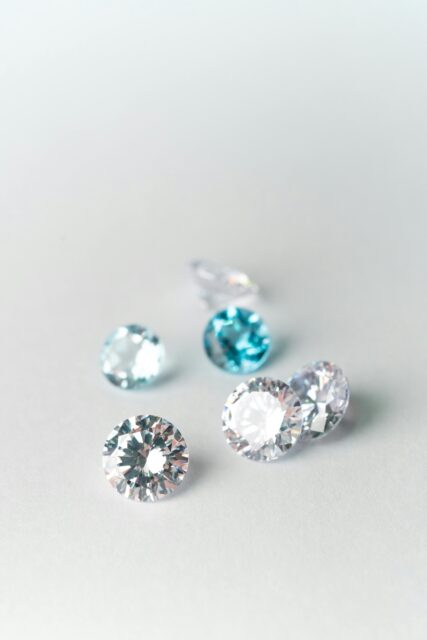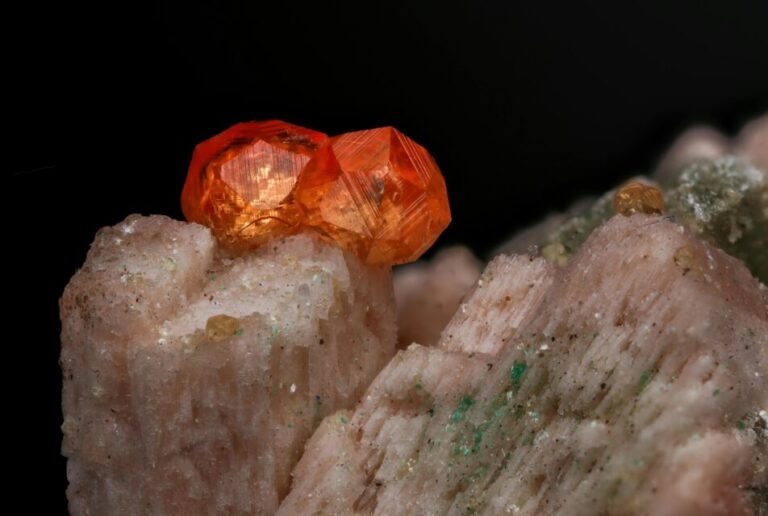A diamond is a man-made or natural mineral. It is known for being made of pure carbon and exhibiting a perfect atomic arrangement in a three-dimensional structure. The diamond is the hardest known substance in the world and is a piece of pure carbon formed deep inside the soil from heat and pressure that was put on carbon rocks.
Diamonds are found as rough rocks, basically in volcanic pipes. These rough diamonds have to be processed so that they can be used to make excellent jewelry. After the rough diamonds are mined, they are purified in a strong acid, a strategy created by goldsmiths in the seventeenth century. Then, the diamonds are polished and cut. This makes the diamond important for jewelry and smaller ones are used for drills and saws. Most of the diamonds used in jewelry are actually flawed and their value is basically determined by their color and brilliance. Hot water and a small abrasion can be used to clean diamonds and diamond cleaners or steam cleaners are also effective methods of cleaning a diamond.
This article is mainly about the types of diamonds; we will also look at other aspects involving diamonds. Let us dive right into it!
What Are Diamonds?
Diamonds are crystalline carbon and the hardest known substance. This hardness gives them their enduring value; not only are diamonds utilized in jewelry, they have become an “industrial” standard for cutting, drilling, grinding and other forms of processing. This is all due to their physical properties.
A diamond is well known from ancient geologists as the only mineral composed of a single element, which is carbon. Any other mineral has a chemical composition involving two or more elements. Diamonds have an amazingly high melting point (3500°C) and an equally high boiling point (almost 60,000 to 70,000 °C).
Diamond has exceptional optical characteristics and because of its amazingly rigid lattice, it can be contaminated by very few types of impurities, such as boron and nitrogen. Combined with wide transparency, this results in the clear, colorless appearance of most natural diamonds. Small amounts of defects or impurities (approximately one per million of lattice atoms) color diamond blue (boron), yellow, brown, green, purple, pink, orange, or red. Diamonds, moreover, have relatively high optical dispersion (the capacity to disperse light of different colors), which results in their characteristic luster.
Diamond is additionally an electric insulator and a great heat conductor, so it is utilized in low-voltage applications and in scientific equipment to replace silver. Since some of the diamond’s properties can differ significantly from one direction to another, experts have created systems of classifying diamonds according to their cut. The most popular one is the round brilliant cut, which optimizes the diamond’s luster
Types Of Diamonds

1. Natural Diamonds
Natural diamonds are formed by a complex process that happens deep underneath the earth’s surface. The process begins with carbon atoms being subjected to extraordinary pressure and high temperatures. Over time, carbon is changed into graphite, then, at last, into a diamond. Most diamonds that are found in nature are between 1 and 3 billion years old.
Some natural diamonds are believed to be much older. In fact, small diamonds found in rock arrangements are thought to be more than 3 billion years old.
Natural diamonds are formed at high-pressure, high-temperature conditions typical for the Earth’s mantle at depths of 140 to 190 kilometers. This kind of depth in the Earth regularly happens in regions of thick continental crust. The situation has diminished the available oxygen in the area, creating a chemically reduced environment.
There are two ways in which diamonds are formed; In most natural diamonds, they are formed in high-pressure, high-temperature conditions existing at depths of 140 to 190 kilometers within the mantle. The second is a formation through subduction. This is often where a tectonic plate moves over another and picks up an increase in temperature and pressure. High-quality diamonds have formed due to these two methods.
2. Synthetic Diamonds
Synthetic diamonds are man-made, but they have a similar chemical composition as real diamonds. They are usually manufactured in a high-pressure, high-temperature (HPHT) process or a chemical vapor deposition (CVD) process.
The HPHT process is where a diamond seed is placed in carbon and exposed to high temperature and pressure for crystal development. This process will not be economical without the aid of metallic catalysts.
Diamonds shaped by the HPHT process usually have issues with structural integrity due to the high temperature. CVD is done by using a methane gas source, warming it up to break the gas molecules and depositing the carbon atoms on a surface to make a diamond. This process does not require high pressure and it can also be done on large surfaces. High-quality diamonds can be made from CVD since it can control the impurities and defects amid crystal development.
Synthetic diamonds are mostly utilized in industry, divided into General Electric and high-quality cuttable. General Electric diamonds are primarily utilized in abrasives, while high-quality cuttable diamonds are utilized for electronics and thermal conductivity. Since the mid-2000s, many have been made in laboratories in China, the USA, Taiwan, Russia, and Hong Kong. These diamonds were created for industrial use and have the potential to be used in jewelry.
3. Fancy Colored Diamonds
A fancy colored diamond is a diamond which obtains its coloring through a process that’s natural. Almost all colored diamonds in the world will obtain their color due to the presence of chemical impurities or structural defects in the crystal lattice structure of the diamond.
Fancy colored diamonds are found in over 12 diverse colors, with more than 90 primary, secondary, and tertiary color combinations. Since the difference between a fancy colored diamond and a colorless stone is the color, the more intense the color of the diamond, the more important and rare the stone becomes. During the formation of the diamond, if it has any foreign minerals included within it or experienced a change to the diamond’s structure, this will alter the color that the diamond emits.
The color change in the diamond can come from a single element within its chemical makeup. Such that the diamond will emit a yellow color; this diamond has been influenced by the element nitrogen.
However, due to the varying conditions and changes the diamonds can go through in their arrangement, the same element can cause a color change in a different diamond. An example of this change is the element boron, which can turn a diamond blue. One diamond with a gray hue and a green secondary color is changed by the element hydrogen.
Color change in diamonds comes from a diverse process, often caused by slight and subtle changes to the diamond, which can be caused through natural means or by basic changes to the diamond’s electron orbital structure. The most common color-changing process known to people is radiation, and many diamonds have experienced changes from alpha particles emitted by uranium compounds in the earth surrounding the diamond to the diamond itself being subjected to other forms of radiation.
4. Industrial Diamonds
The term “industrial diamond” is used to describe a diamond that falls outside the gem quality range. This implies that an industrial diamond is any diamond that is not a gem grade diamond.
Industrial diamonds are those which are utilized in products other than jewelry. It turns out that only 20% of all diamonds found are good enough for use in jewelry, with the remaining 80% utilized for different industrial applications. These diamonds are a crucial part of many industrial processes and have many key properties. The most popular use of diamonds is for its hardness in cutting and grinding tools.
Industrial diamond is mined and produced synthetically and has long been used to cut and grind hard materials, such as stone and ceramics. The diamond is used as an abrasive and to coat cutting tools and Since only diamonds can scratch other diamonds, diamond is the hardest known material. It is used to make a rigid, high-speed cutting edge.
History Of Diamonds
Diamonds are older than any living thing on Earth. They were formed approximately 3.3 billion years ago, deep inside the Earth’s mantle and reached the surface through volcanic eruptions. The first records of diamond that we know are that it was discovered in India around 800 BC.
India was the only source of diamonds and the cost of diamonds was counted in terms of the weight of the grains. Diamonds had a significant value in that they were utilized as religious symbols. Hindus would use diamonds as the eyes of their statues. This was because they believed in the significance of diamonds in that they would bring luck and ward off evil. The conviction in diamonds as a protector makes a significant impact on their value and rarity in the future.
In the earliest stages, diamonds were known in Ayurvedic medicine. They were rubbed and ground into a powder and used as a remedy to cure illness and a way to put a shine on a person who is in old age. This was due to the belief that diamonds have special healing powers and could improve the quality of life due to the fact that illness was accepted to be caused by bad spirits (Gems and Gem Materials, 2005). This era, the “olden era” of diamonds, was prior to the discovery of the cutting techniques for diamonds, and it would be too costly to cut the diamonds because it would break and waste the entire diamond. This meant that only the nobles had the opportunity to possess diamonds because they might be afforded in their state.


